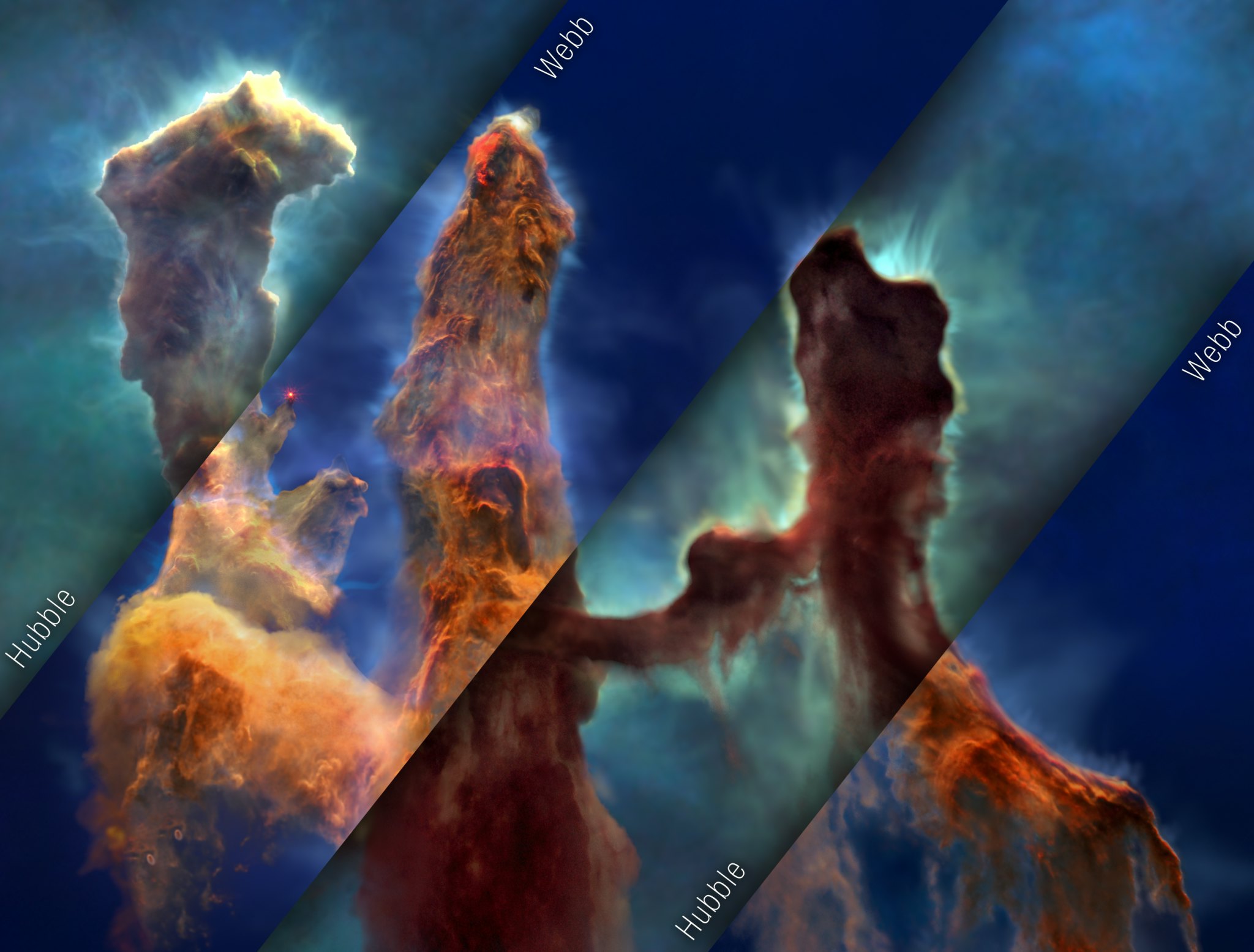
The Pillars of Creation garnered fame for its glorious appearance almost 30 years ago. Now, NASA and its collaborators are revisiting the enchanting cosmic object with a new, 3D video.
Tucked away in a corner of the Eagle Nebula — some 6,500 light years away in the constellation Serpens Cauda (The Serpent’s Tail) — the Pillars of Creation is a series of gas and dust that resembles spires. The Hubble Space Telescope first images these spires in 1995. In 2022, Hubble’s protegee, the James Webb Space Telescope (JWST), peered through the opaque columns and identified never-before-seen details about how the material formed. Now, the Space Telescope Science Institute (STScI) in Baltimore, Maryland has published a new video for NASA that brings new light to what each of the two telescopes has captured.
Soar by the pillars in the 3D visualization published on Wednesday. "By flying past and amongst the pillars, viewers experience their three-dimensional structure and see how they look different in the Hubble visible-light view versus the Webb infrared-light view," principal visualization scientist Frank Summers of STScI, who led the movie development team, says in NASA’s video announcement.
"The Pillars of Creation were always on our minds to create in 3D,” Greg Bacon, production lead of STScI, commented via the announcement.
Two telescopes is better than one. Hubble observed the Pillars of Creation in visible light. In this view, the dense dust created what looked like an impenetrable wall. Superheated gas, stripped of its electrons and turned into ions, created an eerie glow.
With its infrared technology, JWST pierced the pillars. The subtle changes in heat emission the new telescope can pick up allow astronomers to see details in the columns hidden in Hubble. What’s more, bright specks where new stars have arisen also appeared.
“Hubble sees objects that glow in visible light, at thousands of degrees. Webb's infrared vision, which is sensitive to cooler objects with temperatures of just hundreds of degrees, pierces through obscuring dust to see stars embedded in the pillars,” NASA officials wrote.
If this video is any indication, the Pillars of Creation will continue to be an entryway into astronomy, inspiring new enthusiasts to marvel at the universe.







